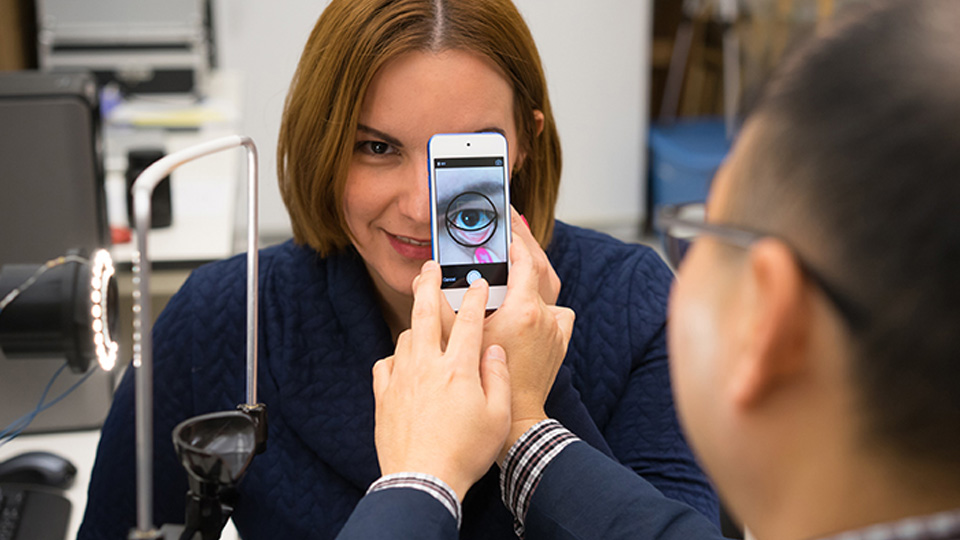Tech to measure hemoglobin with smartphone wins competition
Subscriber Benefit
As a subscriber you can listen to articles at work, in the car, or while you work out. Subscribe Now
Measuring hemoglobin levels with a blood draw is one of the most common lab tests, but West Lafayette-based HemaChrome says the same data could be gathered sans needles. The digital health startup has developed technology it says can measure hemoglobin with the snap of a smartphone camera.
HemaChrome recently won the first phase of a National Institutes of Health competition to accelerate technologies focused on improving maternal health in areas that lack care. But HemaChrome’s founder says the speed and simplicity of the test could bring benefit to more than just mothers.
A hemoglobin test is often used to detect anemia, among other conditions, and is also the most common lab test for OB (obstetric) patients during and after pregnancy. The NIH’s Rapid Acceleration of Diagnostics Technology (RADx Tech) for Maternal Health Challenge focuses on simple methods to care for mothers after delivery, whether at home or during a visit to their local clinic.
HemaChrome founder and Chief Science Officer Dr. Young Kim believes the startup won Phase 1 of the competition due to the simplicity of its technology. Hemoglobin level is typically measured using a spectrometer in a lab, which Kim says is “bulky and expensive.”
“We are using off-the-shelf smartphones without any modifications or attachments,” says Kim, who is also a Purdue University professor and associate head for research at the Weldon School of Biomedical Engineering. “A smartphone has more than 15 built-in sensors; it’s very high quality and really close to scientific-level sensors. The idea is, ‘Is there any way we can leverage these embedded sensors in our smartphone for physiological or biological sensing?’ And hemoglobin assessment is one of them.”
Kim believes the technology could have the biggest impact in healthcare deserts, because it requires nothing but a smartphone.
HemaChrome’s technology works by taking a photo of the inner lower eyelid. The resulting image contains rich color information, or what’s called “hyperspectral information.”
“We have an algorithm called hyperspectral learning that basically converts a photo to detailed color information, or hyperspectral information,” says Kim. “Then, we can do some spectroscopy analysis to get an idea about the exact content of pigment—in this case, blood hemoglobin.”
Kim says the technology can produce hemoglobin levels comparable to those obtained through a traditional veinous blood draw. And rather than traveling to a lab and waiting two to three days for results, HemaChrome provides the data instantaneously. Kim notes the method could be used in any clinic, or a patient could even do the test at home.
“A person at home can take the photo, then the analysis is done in the cloud,” says Kim. “It can also be integrated into a telemedicine setting; looking at the doctor through the monitor or phone, the doctor can take a screen shot, then analyze it.”
The maternal health challenge, which includes two more phases, focuses on the postpartum period of one year after giving birth; this timeframe accounts for a large portion of maternal deaths in the U.S. The NIH says many maternal deaths are preventable if the health problem is identified early. The competition aims to improve care in maternal health deserts, so the ability to perform the test at home is a major advantage.
“The NIH wants to identify technologies that can secure FDA approval on a very tight timeline,” says Kim. “[The competition] will give us more direction, so we have a clear pathway for FDA approval associated with digital health. I think we’ll be able to move relatively quickly.”
HemaChrome is partnering with IU Health Arnett in Lafayette and the IU School of Medicine in Indianapolis to test the technology with nearly 200 patients. The startup is licensing the technology through the Purdue Research Foundation Office of Technology Commercialization and will continue to the next phase of the NIH competition.
“As an engineer, I’m so grateful that we can translate technology generated from the lab at Purdue and scale up such that we can impact healthcare and have a societal impact,” says Kim. “That’s truly amazing to an engineer.”
Kim says there are many positive ripple effects of winning the RADx Tech for Maternal Health Challenge.
